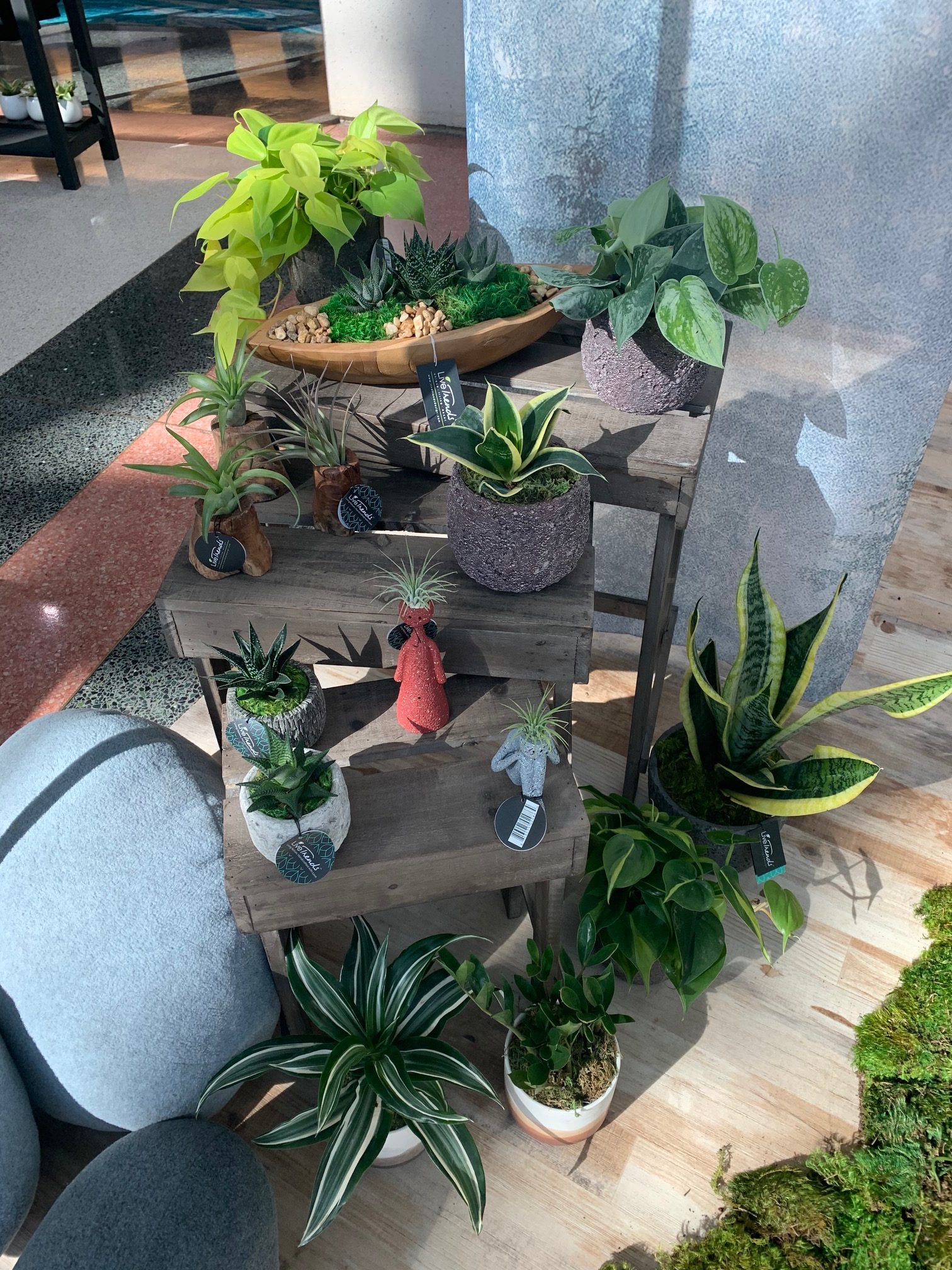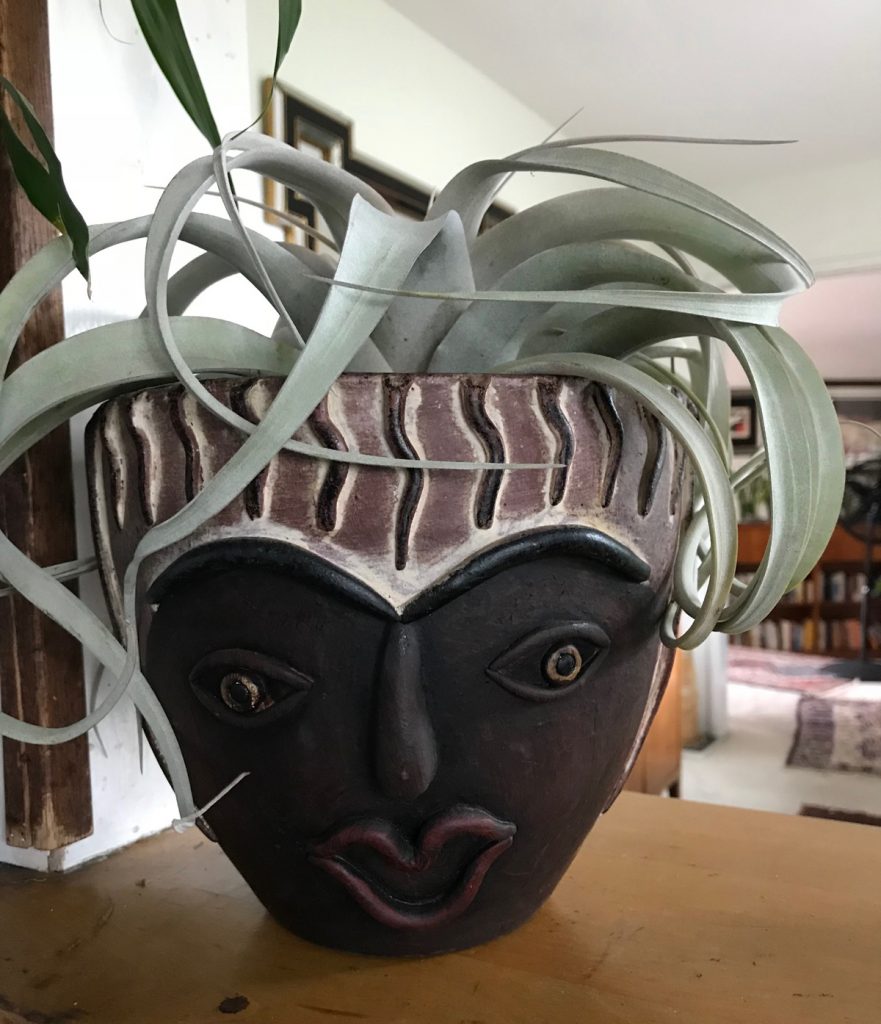
Use your head and make a good container match with your plants following our indoor plant container tips. Photo: Jim Mumford
So much of our inspiration at Good Earth Plant Company comes from the containers our plants live in.
Don’t get me wrong. Our mission remains focused on enriching peoples’ lives with plants. But over the years, some of my biggest brainstorms came when I stretched my thinking about containers. When I realized a green roof is just one big container for plants, it started a whole new business.
Plants and containers are inseparable partners to us at Good Earth Plant Company. We work with our clients to choose their containers with care – and flair!
Along with the indoor plant craze that started during the pandemic, people have been getting creative with containers, too. I’ve seen some amazing things. Most recently, two Los Angeles entrepreneurs started creating customized plant containers out of recycled basketballs. What a great way to keep a petroleum-based product out of the landfills – and they have a lot of swag.
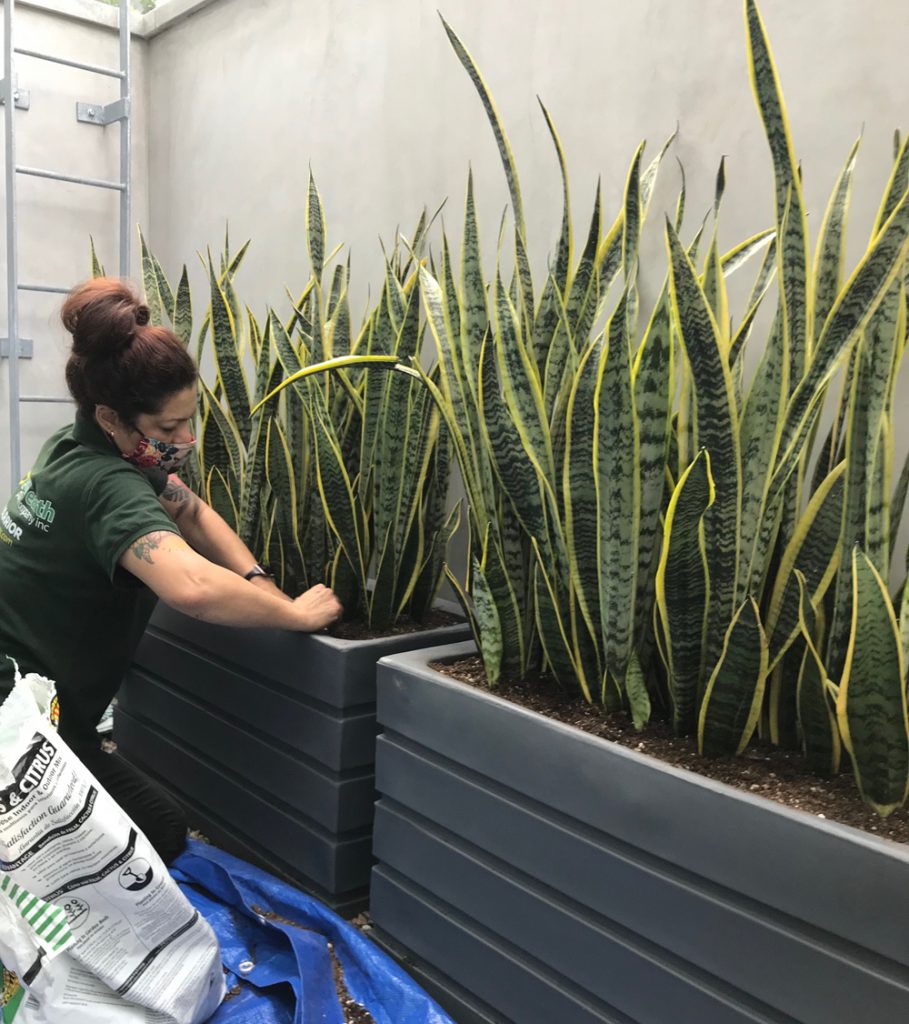
Horticultural technician Lisa works on these planter box style containers with texture and color to contrast with the Sansevieria plants. Photo: Good Earth Plant Company
Next week, I’ll participate in one of my favorite workplace greenery gatherings, the annual Cultivate 2021 conference in Columbus, Ohio. I love to see what new kinds of containers vendors have come up with. I bring these new ideas home for clients.
But we can’t sacrifice style for function. All containers need to follow the basics to keep your plants healthy and thriving. Design decisions need to take a back seat to growing requirements.
Tips when you’re shopping for a new home for your indoor plants
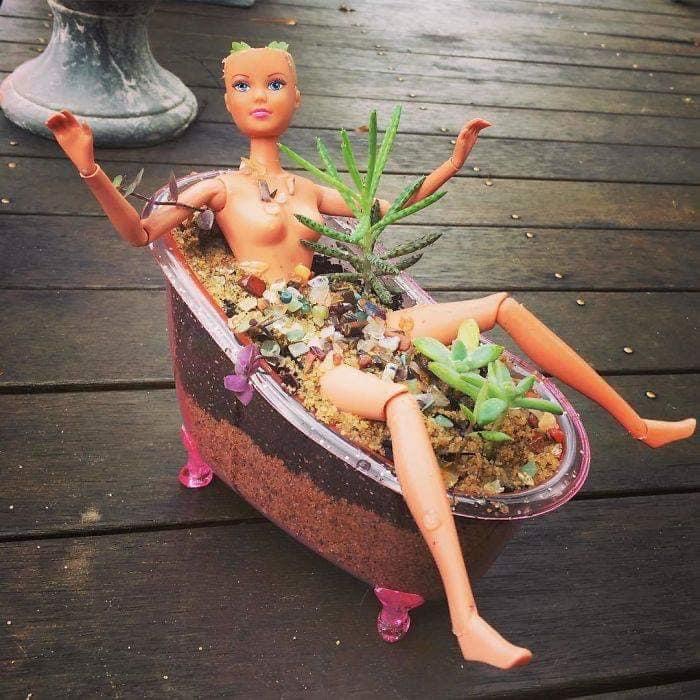
Whatever container you choose for your plants – even a mini bathtub for Barbie – be sure it has adequate drainage. Photo: Jim Mumford
Drainage, drainage, and more drainage. More plants are killed by too much watering than too little watering. Containers can help by providing plenty of drainage. If there isn’t a good-sized draining hole (or several) in the bottom of the container for water to flow out, the roots will sit in waterlogged planting mix and rot.
To protect surfaces, some containers have small rubber plugs to seal those drainage holes. We don’t love this, but make sure your container is thoroughly drained before plugging the drainage hole.
Some containers sit on a saucer to capture drainage water. Eh, we don’t love these but if you use one, make sure you empty it and keep it dry. Standing water can seep back up into the container and cause root rot. It can also attract pests. Fungus gnats or mosquitoes, anyone?
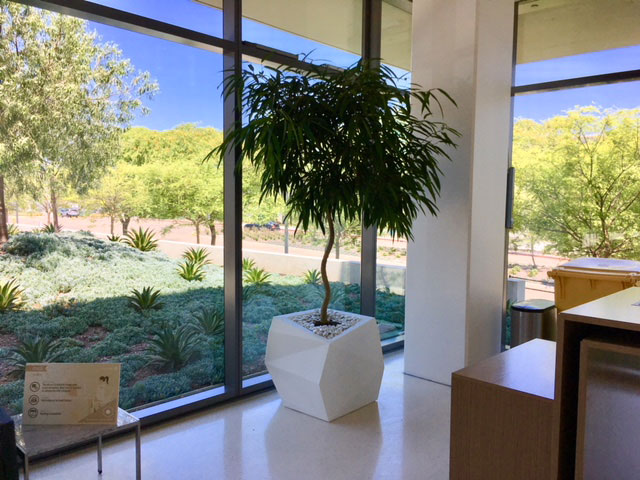
An indoor tree in one of our favorite “origami” style containers for a Plantscaping client.
Bigger is usually (but not always) better. Larger containers don’t dry out as quickly because they hold more soil. They also prevent plants from getting rootbound, stunting growth and requiring repotting, which stresses a plant. We like using larger containers for groups of several small plants. These groupings deliver more design impact than lots of smaller containers.
A warning about larger containers: they can be heavy, especially right after you’ve watered your plants. Try to avoid moving them by choosing their location carefully before planting them. Use planter caddies on wheels when you need to move them.
Container size and shape matters
Container materials make a big difference to your plants. Containers made out of porous materials like clay will absorb water away from roots.
The shape of the container matters, too. For complex reasons of physics, a taller, narrow plant container stays drier. Gravity draws water more quickly through a taller container and out through drainage. A wide, shallower container with the same amount of soil spreads out water into the soil and retains it longer. Think taller containers for succulents and cactus, wide and shallow containers for plants that love moisture.
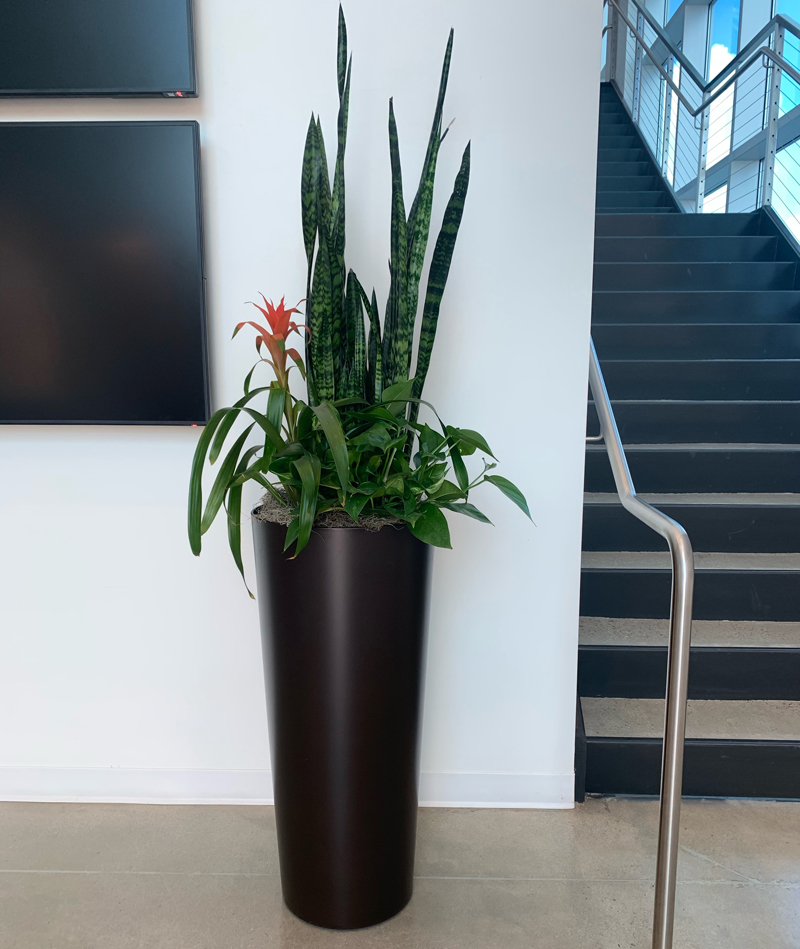
Tall containers stay drier, so they match best with plants that don’t need much water. Photo: Jim Mumford
All container plants like air circulation among the roots and room to spread out. Use potting soil with supplemental materials like perlite or gypsum added, and don’t pack the soil into the container. Think “fluffy.”
Once you’ve addressed the basics, your design choices are nearly unlimited.
Do you want your containers to blend into your existing interior design? Or do you want your containers to stand out and provide a pop of color or a surprising shape?
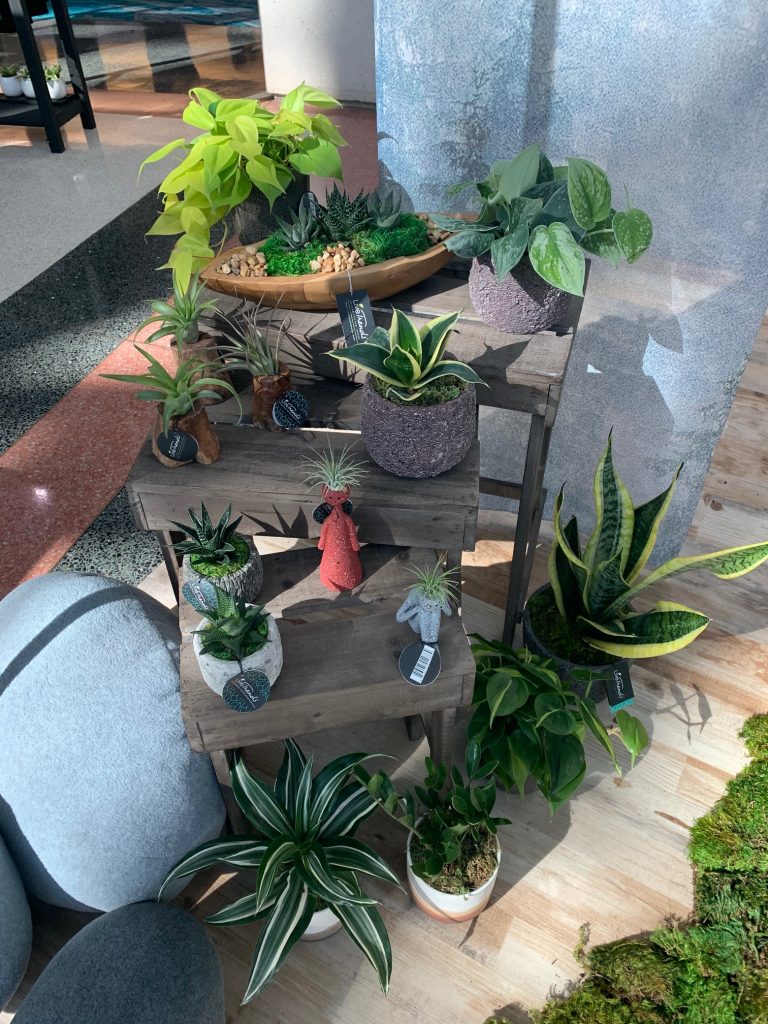
Mixing and matching different plants and containers into a display adds up to an impressive feature in a home or workspace. Photo: Jim Mumford
Nearly any size container, nearly any material (ceramic, fiberglass, metal, bamboo, and concrete), infinite colors, textures, and planter shapes are available to hold your plants. The good news: manufacturers are getting more creative with design options every day. Hint: we post photos of the best new items on our social media pages.
Be sure to check out our blog next week when we’ll share our latest finds and enrich your life from Cultivate 2021. We can’t wait!

